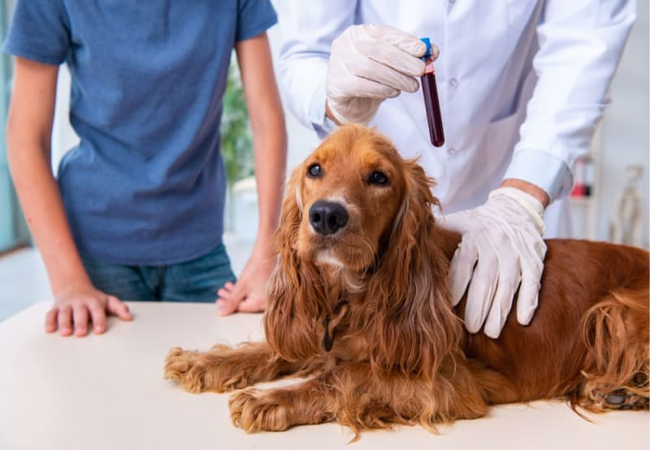Rhabdomyosarcoma of the Urinary Bladder in Dogs: Veterinary Guide 2025 🩺🐾

In this article
Rhabdomyosarcoma of the Urinary Bladder in Dogs: Veterinary Guide 2025 🩺🐾
By Dr. Duncan Houston BVSc
I’m Dr Duncan Houston BVSc, veterinarian and founder of Ask A Vet. In today’s specialist guide for 2025, we're addressing urinary bladder rhabdomyosarcoma—a rare and aggressive tumor arising from muscle cells in a dog’s bladder. Despite its rarity, it poses serious risks due to its ability to grow rapidly and metastasize. Let’s examine what it is, how it's diagnosed and treated, and how you can support your dog through care and recovery—with integrated insights from Ask A Vet. 💙🐶
1. What Is Bladder Rhabdomyosarcoma? 🤔
Rhabdomyosarcoma is a malignant tumor originating from striated muscle cells or embryonic muscle precursors. When this tumor arises in the urinary bladder, it can infiltrate tissues and cause severe clinical signs.
In dogs, bladder rhabdomyosarcoma (ubRMS) is exceedingly rare but aggressive, typically affecting younger dogs and leading to rapid tumor growth and potential spread.
2. Who Is Affected & Why? 🐾
- More common in **young to middle-aged dogs**, though it can appear at any age.
- No strong breed predisposition, but small breeds (e.g., Maltese) have been reported.
- Because these tumors are based in muscle or embryonic tissue, there is **no known inheritance pattern** in dogs.
3. Clinical Signs & Symptoms 🕵️♂️
Bladder rhabdomyosarcoma often presents with:
- Hematuria (blood in urine)
- Pollakiuria (frequent urination), straining, or dysuria
- Urinary retention or obstruction if the tumor blocks outflow
- Abdominal pain, lethargy, decreased appetite
4. Diagnosing Bladder Rhabdomyosarcoma 🔬
Diagnosis requires a stepwise approach:
4.1 Lab Tests
- Urinalysis to detect hematuria or abnormal cells.
- Blood work (CBC, chemistry) to evaluate overall health and metastasis risks.
4.2 Diagnostic Imaging
- Ultrasound: Identifies bladder mass and involvement.
- Contrast cystography or CT scan: Defines tumor size, location, and invasiveness.
4.3 Endoscopy & Histopathology
- Cystoscopy with biopsy: Enables tissue sampling for definitive diagnosis.
- Histopathologic & immunohistochemical staining: Confirms rhabdomyoblast characteristics.
5. Treatment Strategies 🛠️
Treatment is multimodal and aggressive, given the tumor's nature:
5.1 Surgical Resection
Partial cystectomy is possible if the tumor is localized. Case reports show successful resection with temporary remission.
5.2 Chemotherapy
- The protocol includes agents like vincristine, actinomycin-D, cyclophosphamide (VAC protocol commonly used in RMS).
- Combined therapy improves survival but the prognosis remains guarded.
5.3 Radiation Therapy
Used for local control post-surgery, especially when full resection isn't possible.
5.4 Combination Therapy
Best outcomes involve surgery, chemo, and radiation—but dogs typically face high recurrence risk despite multimodal treatment.
6. Prognosis & Survival 📊
Bladder rhabdomyosarcoma carries a poor prognosis due to its high metastatic potential:
- Median survival with aggressive multimodal treatment is often under a year.
- Even after surgical removal, metastasis to liver and other organs is common.
- Dogs presenting late or with large masses typically experience shorter survival times.
7. Supportive & Palliative Care 🧡
- Pain management: NSAIDs or opioids to reduce discomfort.
- Nutritional support for appetite and weight maintenance.
- Bladder management: catheterization as needed to relieve obstruction.
- Monitor quality of life using tools from Purrz health tracking.
8. Role of Ask A Vet,💡
- Ask A Vet: Telehealth consultations, coordinated chemotherapy follow-ups, palliative care planning.
9. Monitoring & Follow-Up 📅
- Re‑imaging every 3 months to check for recurrence or metastasis.
- Frequent urinalysis for hematuria or infection.
- Adjust treatment plans based on progression and dog's comfort.
10. Decision-Making & Family Support 🧩
With ubRMS, open conversations about treatment goals, quality of life, and potential outcomes are essential. Ask A Vet can help families create a realistic, compassionate roadmap for care.
11. Final Thoughts 📝
Urinary bladder rhabdomyosarcoma in dogs is a rare but aggressive cancer with challenging outcomes. Though treatments exist, early detection and combined interventions are critical. With compassionate, multimodal care and tools from Ask A Vet, pet families can navigate this difficult journey with greater clarity and support. 🐾💙
If you suspect bladder cancer or notice hematuria, straining, or discomfort, schedule a prompt telehealth consultation via AskAVet.com and download our app for ongoing guidance and care updates. 🌟






